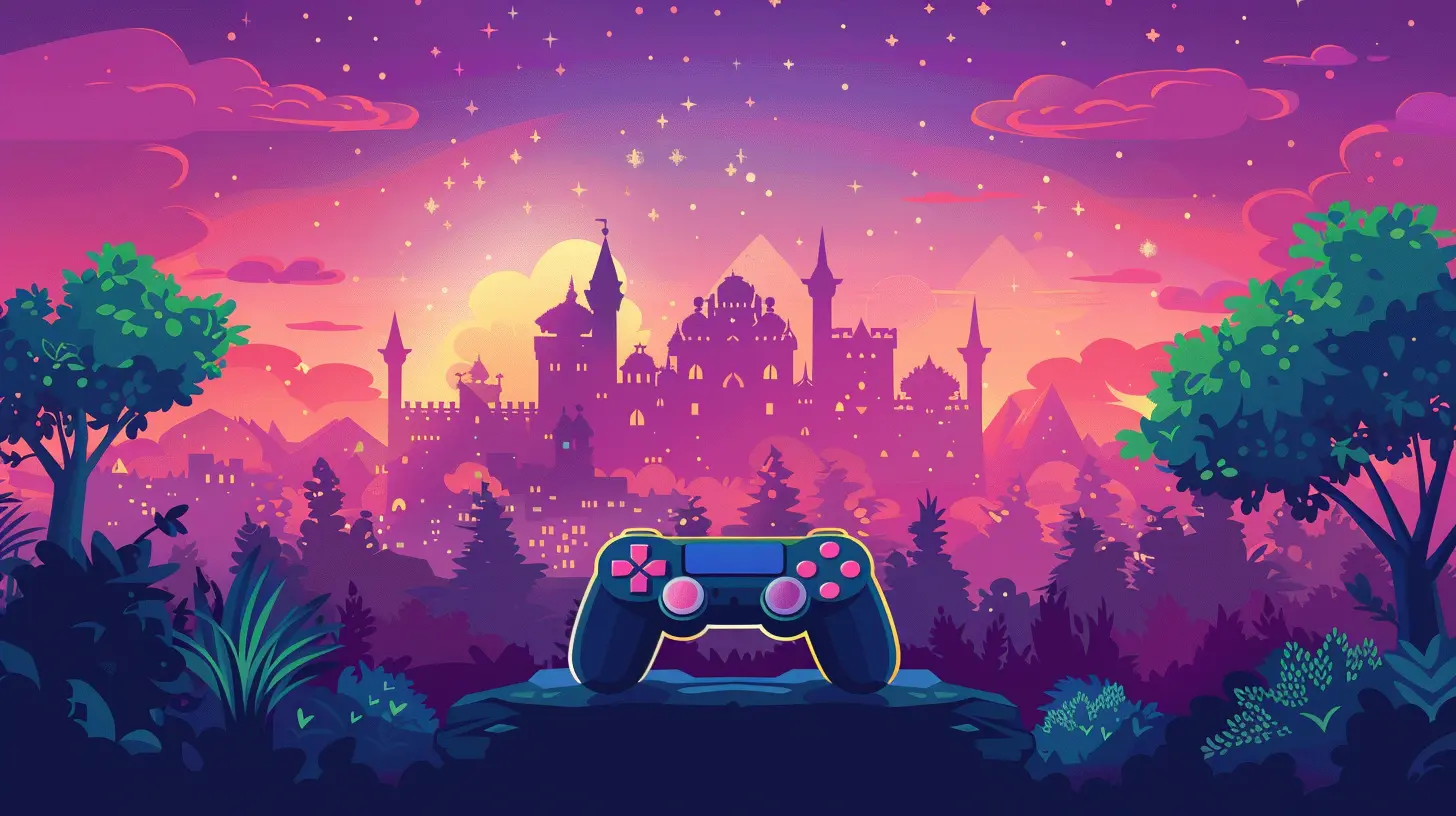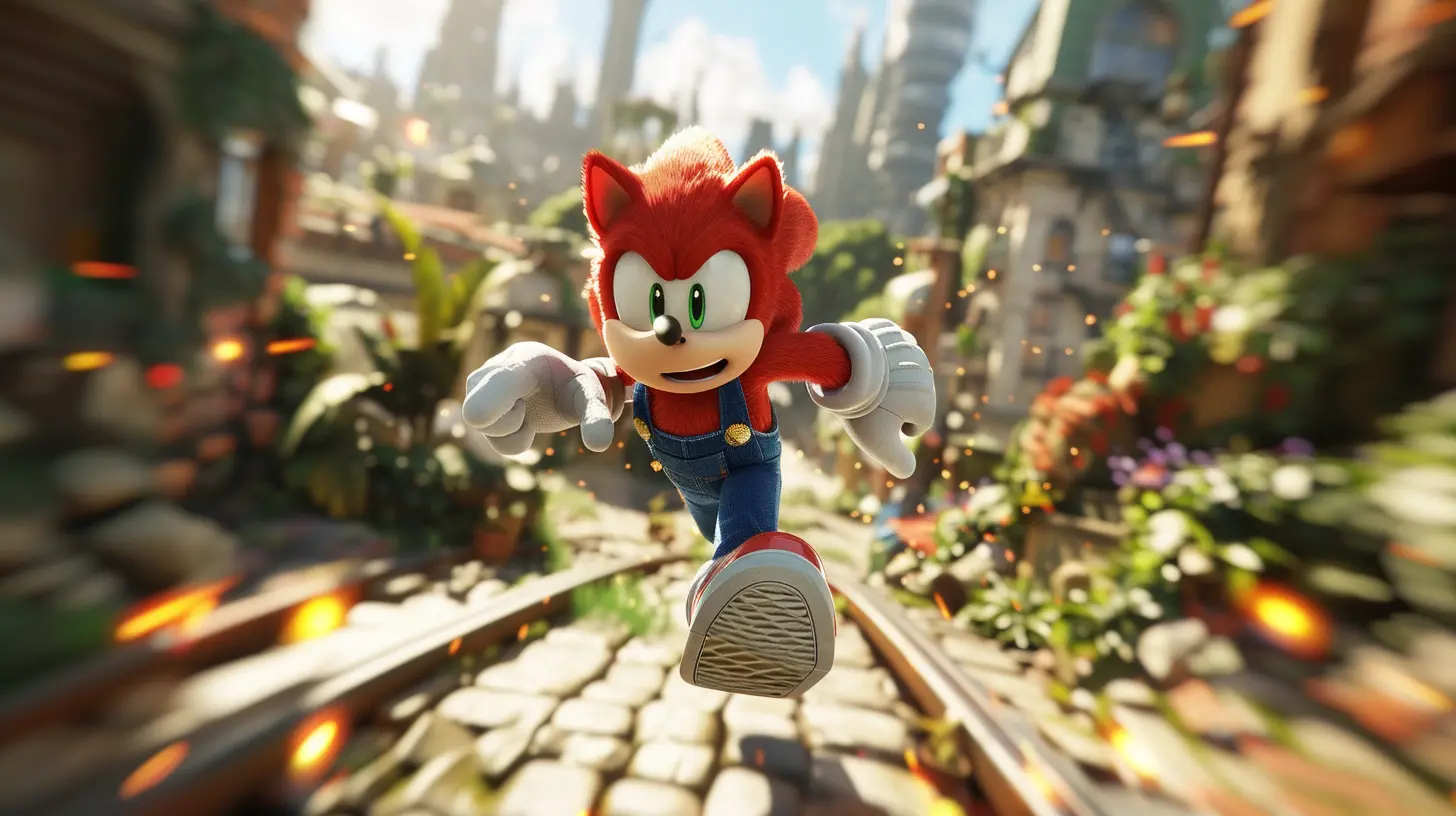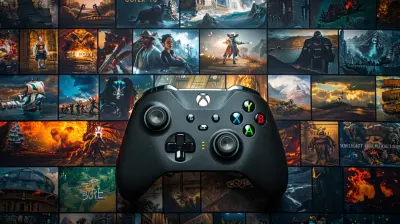How to Balance Power Ups in Competitive Gameplay
14 July 2025
Ever played a game where one guy grabs a power-up and suddenly becomes Thanos with a joystick? Yeah, we’ve all been there. Power-ups can be a blast—literally! But when not handled right, they can break the game and leave players feeling more frustrated than a contestant on a rigged game show.
In competitive games, where every pixel and second counts, poorly balanced power-ups can tilt the scales faster than a banana peel on Rainbow Road. But don’t worry, gamer friends! Today, we’re diving deep into how to balance power-ups in competitive gameplay without losing the fun (or your fanbase).
Let’s break it down like a crate of loot in a boss fight!
🎮 What Are Power-Ups in Games Anyway?
Power-ups are those neat little in-game bonuses that give players temporary abilities or advantages. Think speed boosts, shields, double damage, invisibility cloaks—you get the idea.They’re like the chili peppers in a bowl of ramen: spicy, unexpected, and game-changing.
They make games exciting and unpredictable. But too much spice? And you’re just crying over your soup. That’s the fine line developers have to walk—keeping things thrilling without burning players out.
⚖️ Why Balancing Power-Ups Matters
Let’s be honest—nobody likes feeling helpless in a game. If one power-up turns Joe from “casual Joe” to “unstoppable death machine,” the other 9 players might start rage-quitting faster than you can say “nerf it!”Balance becomes even more critical in competitive games where rankings, leaderboards, and pride are on the line.
Here’s why you need to nail this:
- Fairness: Everyone should have a fighting chance.
- Engagement: A well-balanced power-up system keeps players coming back.
- Skill Expression: Power-ups should reward skill, not just lucky spawns.
- Game Longevity: Balanced games have healthier player communities.
In short? Good balance makes a good game great.
🔍 Common Power-Up Problems in Competitive Games
Before we start solving problems, let’s identify the usual suspects that throw power-up systems out of whack.1. Overpowered Pickups
When a power-up makes a player virtually invincible, it stops being a bonus and starts being a win condition. That’s not cool—unless you're the one holding it (and even then, it gets boring real fast).2. Randomized Location or Timing
Spawn points and timers attached to power-ups that show up in unpredictable fashions can disrupt the overall flow. If one player gets lucky and grabs the golden item because of pure timing? That’s more slot machine than skill.3. Favoring the Leading Player
If the game keeps feeding power-ups to the player already in the lead, it's like giving a jetpack to a marathon leader. It widens the gap and can feel punishing for everyone else.4. Unclear Effects
Players need to understand what a power-up does instantly. If someone grabs a glowing orb and suddenly they’re flying, invincible, and dealing double damage, but nobody else knows why... that’s just confusing chaos.
🧠 Principles for Balancing Power-Ups Like a Pro
Alright, now that we understand the potholes, let’s lay down the smooth road. Here are some golden rules for achieving power-up peace in your game.1. Contextual Balance
Balance isn’t one-size-fits-all. What’s OP in a 1v1 could be fine in a 10-player free-for-all. Always tailor your power-up effectiveness to:- Number of players
- Game mode
- Map size
- Player progression
In team-based games, a strong power-up could be fine if it can be countered by good coordination. Solo modes? Not so forgiving.
2. Risk vs Reward
The best power-ups should be tempting—but not without effort. Hide them in risky areas. Maybe they’re exposed on a high platform, or in the middle of the battlefield.Make players work for their reward.
It’s like reaching into a cookie jar balanced on a stack of Jenga blocks—doable, but dangerous.
3. Predictable Spawns (But Not Too Predictable)
If you always know when and where a power-up will spawn, top players will camp those spots like hawks. Instead, give some structure but add randomness:- Power-ups spawn every 60 seconds
- But which one spawns is random
- Or rotate spawn locations slightly
This keeps things fair but avoids total chaos.
4. Visual and Audio Clarity
Let players see and hear what each power-up does. Use distinctive icons, colors, and sound effects. That way, there's no confusion when someone suddenly turns into a juggernaut.Clarity builds confidence. Confusion builds Reddit threads full of complaints.
5. Scaling Effects
Want to keep things tight and competitive? Scale power-ups based on the game situation. A speed boost might be more generous to a trailing player than the one in first place.This is basically the "rubber-banding" effect seen in games like Mario Kart. Controversial? Maybe. Effective? Heck yes.
6. Counterplay Options
Don’t give power-ups without giving counters. If there’s an invisibility power-up, maybe another player can use a sonar ability to detect them. If there’s a shield, maybe high damage can still break through.Rock should beat scissors—but scissors should still have a shot.
🛠️ Tools Developers Use for Balancing Power-Ups
Balancing isn’t just trial and error (though there is a lot of that). Here are a few tools and strategies dev teams use to polish things up.A/B Testing
Split your player base into two groups. Give each group a slightly different version of the power-up system. See which one performs better in terms of engagement, win rates, and player feedback.Telemetry Data
Track pickup locations, usage times, win ratios after pickup, etc. If 80% of matches are won by whoever grabs a specific power-up? That’s a red flag the size of Final Fantasy's endboss.Community Feedback
Your players are your greatest tool. Encourage feedback from both casual and competitive players. Sometimes, your spreadsheet looks fine—but the feel of the game tells a different story.Iterative Patch Updates
Release updates gradually. Tweak one variable at a time and observe. It’s like seasoning soup—go a pinch at a time, don't dump the whole salt shaker in.🌍 Real-World Examples of Great Power-Up Balance
Want to see power-up balance done right? Here are some games that totally nailed it—and maybe one that… didn’t.✅ Super Smash Bros.
Power-ups are optional in competitive modes, but when used, they’re well-spaced and require effort to grab. Items like the Smash Ball spice things up without ruining the balance—because skilled players can dodge, counter, or fight for control.✅ Overwatch
While it doesn’t use traditional power-ups, the concept of "ultimate abilities" works similarly. Every player can charge their ability over time, so everyone has access, and it becomes a part of strategy rather than chaos.❌ Call of Duty Killstreaks (sometimes)
Killstreaks can reward already dominant players, creating a snowball effect. Ever been on the receiving end of a Nuke just because one guy went full Terminator? Yeah, not fun.🕹️ Balancing Power-Ups in Different Game Genres
Power-ups play differently across genres, so your balancing approach should adapt too.🎯 In FPS Games:
- Focus on map control.- Place power weapons or boosts in risky but fair locations.
- Limit duration or ammo of power-ups.
🚗 In Racing Games:
- Use rubber-banding to help trailing players.- Randomize items (but skew better ones to lower-ranked racers).
- Prevent leading players from constantly grabbing boosts.
⚔️ In Fighting Games:
- Keep power-ups out of competitive ranked modes.- If included, ensure clear counters and limited duration.
💥 In MOBA Games:
- Add neutral zone power-ups like buffs.- Ensure both teams have equal chances to contest them.
- Make power-ups synergize with strategy, not just stats.
🚀 Final Tips for Keeping Power-Ups Balanced (And Fun!)
Let’s wrap up with some quick-fire advice that’ll turn your game from “meh” to “more, please!”- Don’t make power-ups mandatory to win.
- Allow power-up customization in private matches.
- Use community testing periods and open betas.
- Watch how top players exploit your system—and patch accordingly.
- Try “diminishing returns” mechanics for stacking power-ups.
And most importantly: make power-ups feel GOOD to use, even if they’re fair. That’s the sweet spot.
👾 Conclusion: Power-Ups Should Empower, Not Overpower
Balancing power-ups in competitive gameplay is kind of like being a dungeon master—you want everyone to have fun, face challenges, and come out with epic stories. But nobody likes the game where one player gets the God Sword of DoomTM in the first two minutes and steamrolls everyone else.Keep it fair, keep it fun, and keep playtesting! Because the best power-ups aren’t the ones that break the game. They’re the ones that make it unforgettable.
Game on!
all images in this post were generated using AI tools
Category:
Video Game DesignAuthor:

Avril McDowney
Discussion
rate this article
2 comments
Karen Marks
This article highlights a crucial aspect of game design—balancing power-ups. Striking the right balance can enhance competitiveness and player engagement. I appreciate the insights on varying power-up effects and their impact on strategy. However, implementation will require ongoing player feedback to truly achieve fairness in gameplay. Great read!
November 7, 2025 at 5:35 AM

Avril McDowney
Thank you for your thoughtful feedback! I completely agree that player feedback is essential for achieving balance and enhancing the gaming experience. I'm glad you found the insights valuable!
Rina Hodge
Thank you for this insightful article! Balancing power-ups is crucial for fair competition and enhancing player experience. Your suggestions will undoubtedly help game developers create more engaging and enjoyable gameplay for everyone involved.
July 27, 2025 at 3:54 AM

Avril McDowney
Thank you for your kind words! I’m glad you found the article helpful. Balancing power-ups is indeed key to enhancing gameplay for all players.


